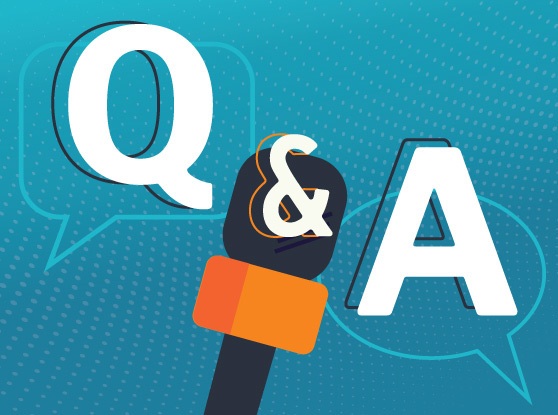
From Magic Quadrant Visionary to Leader: Q&A with SentinelOne’s CMO

For ScaleUp companies selling to Enterprise buyers, being recognized on a Gartner Magic Quadrant, let alone being recognized as a Leader, is an incredible, trajectory-changing accomplishment. Analysts provide market visibility, credibility, and critical guidance to Enterprise decision makers. Being a Leader can significantly increase leads and improve win rates, whether through direct Analyst referral and validation or by using the reports as lead gen and sales tools. This is especially true during times of uncertainty like today. Enterprise buyers are turning to Analysts to help them prioritize initiatives, get up-to-speed on new technologies, create shortlists, and validate ROI. Beyond directly increasing ARR, being a Leader can also increase the profile of the company, resulting in more options when it comes to partnerships or when it’s time to raise money or pursue an exit.
While it’d be great to be a Magic Quadrant Leader, for ScaleUp companies there’s value in just ensuring that Analysts understand your business, product, and unique differentiator. There’s also value in leveraging Analyst insights to inform marketing, sales, and product strategies – Analysts are, after all, in frequent communication with your prospects and competitors. While Analyst Relations is incredibly valuable, it’s also very expensive and opaque, and most ScaleUp companies lack the resources and expertise to drive results. Analyst Relations is often someone’s side hustle or owned by someone who has never done it before. Last, Analyst Relations is a journey for every company – it’s not a “one and done” project that turns out perfectly the first time and stays that way. It can take years for companies to see the placements they seek. These are some of the reasons why Analyst Relations is a focus area of ours in Onsite’s Marketing Center of Excellence.
To help our portfolio companies and other B2B ScaleUps drive more impactful Analyst Relations, and even better, become Magic Quadrant Leaders, we sat down with SentinelOne’s CMO, Daniel Bernard. SentinelOne is a modern cybersecurity platform protecting endpoint, IoT, and cloud attack surface built for the challenges of today’s environment. It was recently recognized as a 2021 Magic Quadrant Leader, due in part to a re-imagined Analyst Relations program.
To start, can you provide some context on the role that Gartner plays in your market? How did this change during COVID?
The stakes are incredibly high in cybersecurity. When choosing which product to deploy, whether endpoint protection or another cybersecurity solution, you don’t want it to be a factor in a breach. In the security space, Gartner plays a critical role in advising CISOs and validating the product decisions they make. “Why did you buy product X?” It’s a lot easier to answer that question when a CISO can point to a Magic Quadrant. Endpoint security is an important market for Gartner; it’s invested significant time and resources to cover the space, talk to end customers, evaluate vendors, and understand how these vendors address customer needs. This makes Gartner a vital knowledge base for CISOs that can help them make better decisions quickly. Not surprisingly, this makes Gartner even more important during COVID. CISOs are more resource-constrained and have more things to tend to than before. They’re looking to make faster decisions, and Gartner helps them do fewer evaluations and be more confident that they are making the best choice for their organization.
How important is the Gartner Magic Quadrant (MQ) in your market?
For our market, an MQ is a coefficient of friction. Either it’s working for you and helps you get into deals and move faster in those deals, or it creates a drag and you have to work that much harder because you’re not the leader in the box.
You’ve just been named a Leader in the most recent Gartner MQ for Endpoint Protection Platforms and were the highest scored solution in all 3 use cases in the critical capabilities evaluation. Can you talk about your journey to Leader?
SentinelOne has been a Visionary for several years in the MQ. We didn’t think our placement reflected where we should be given the feedback we receive from customers, what we know about the value our product delivers versus competitors’, and the size and growth of our company. We came to a realization, and an agreement, that we should do better. It sounds obvious, but until you get that alignment from product, sales, marketing, and the exec team, your journey hasn’t begun. Your journey begins when you say we must do better. We realized the shortcomings of our Analyst Relations program. We didn’t have a clear owner, it wasn’t resourced properly, we weren’t doing the right frequency and quality of briefings, and when we did engage, we weren’t doing it in the right way.
So, we focused on building the right team and the right expectations, building a calendar, and ensuring we were engaging with Gartner, using the right content and the right speakers to present, and leveraging its community. We became better at articulating our differentiation and proving the value we provided to customers using data and evidence. We feel that these recent results, especially in the critical capabilities evaluation, really showcase the strength of our solution. In the 2021 Gartner Critical Capabilities for Endpoint Protection Platforms, no one else is the highest scored across all 3 use cases – this really validates SentinelOne’s ability to solve the most pressing challenges faced by security leaders.
You highlighted having the right team. What does your Analyst Relations team look like?
The key members of our Analyst Relations team are an AR Director who is the program manager for how we run Analyst Relations, a VP of Product Marketing who helps ensure that we are delivering the right messages in our briefings, and I oversee the program. All in, it’s about 1.5 FTEs. What we’ve learned, though, is that Analyst Relations is a team sport. It’s important that we choose the right subject matter expert in the business, product, and engineering teams to help brief Analysts and to take part in inquiry calls. Our product managers each spend some level of time on it as well as a subset of our sales engineers and executives when appropriate.
You also flagged the importance of actively engaging with Gartner and engaging in the right way. Can you elaborate on this?
Having the right level of consistent interaction and making sure that each engagement is valuable is the crux of operating an effective Analyst Relations program. You don’t need to talk to them every day; it shouldn’t be a forced discussion. You want to talk to them with some level of consistency around things that actually matter: “We’re releasing this and wanted to brief you on it before we release it” or “We won these deals, and we want to brief you on them and why.” On the inquiry side, “We’ve gotten this question from 15% of our customers. Can you help educate us on this area?” You need to make sure that it’s a dialogue and not just you pushing information at the Analyst. Also, whereas a sales pitch is often about sharing opinions, Analysts need to hear the facts – data-driven discussions are critical. The data you share is your currency with an Analyst. The vendors who are successful go in with an open mind and open ear and let the information influence their strategy and roadmap. Demonstrating you’ve listened and delivering releases/messaging based on the Analyst’s feedback are keys to developing a strong vendor-analyst relationship.
In terms of what that cadence is, for briefings we try for every four to six weeks and inquiries on an as-needed basis with each Analyst. We went through a period where there were too many inquiries. One per month is a good rhythm or two engagements every six weeks. Many Gartner categories have several Analysts. If you are shooting for that, that’s a lot of briefings and inquiries. You shouldn’t make them just to have them. What we do at the beginning of each quarter is the CPO, VP Product Marketing, AR Director, and I sit down and decide, based on the roadmap, on the briefing and inquiry schedule and topics to cover.
You also mentioned leveraging the Gartner community. What are you referring to here?
I’m specifically talking about Gartner Peer Insights. This is a valuable resource for our prospects and for us internally to get more attuned to what our customers are looking for. We read every review and at least once a quarter our CPO reviews everything. We pick up a lot of interesting insights into how we can improve and use it to create a strategy around where to focus to become better. Recognizing the value of Peer Insights, our customer, sales, and marketing teams have actively been collaborating to engage with customers on an ongoing basis. We have integrated Peer Insights into key touchpoints and are regularly asking customers to anonymously and objectively review us and share it. Gartner has also placed a greater emphasis on Peer Insights as part of the MQ process, and even more so during COVID. I’m sure our strong reviews on Peer Insights across each of our product areas – EPP, EDR, and MDR – also helped our MQ position.
What advice do you have for someone going through the MQ for the first time?
You need to treat your MQ submission and the whole process seriously. We treated that MQ submission like the biggest deal our company has ever closed. For our video submission, we put a lot of energy and effort into it to make it cool and professional and “us.” We also made it very well organized and easy to follow. Each component they wanted us to show is its own section of video to make it easy to navigate and to show that we exceeded the criteria for every category. This isn’t a “let’s wing-it” situation – this was very professionally produced. On that point, make sure you dedicate enough time and resources to complete the submission. This was probably 50% of everyone’s time, more so at the end. It easily takes over 500 hours across the team. I’d also use technology to help manage this process. We used a tool that is normally used to manage RFP workflows. We uploaded all the questions and assigned them to the right subject matter expert. We also reviewed the responses multiple times holistically to make sure that the responses were all on-message and on-point.
What happens now? How do you make sure you get the most out of your recognition?
You need to make sure you’re articulating it right on the website, sending emails, doing a webinar to talk about it, and of course a press release. You should be running integrated campaigns and digital ads around it. It’s our first time as a Leader, and we really want to make a lot of noise about the achievement.
Do you have any advice for people who aren’t happy with their MQ results?
I can write a book about what to do if you aren’t happy! If you aren’t happy with the results, then you really need to position your strong points and enable your sales team. They will have to go out to the field and defend against the position. You need to claim some sort of victory. For example, you’re a consistent innovator. What’s important with the Gartner MQ is that it could always be worse. It could usually always be better, too.
Any last pieces of advice on effective Analyst Relations?
Getting Analyst Relations right is part of building a successful go-to-market strategy. You need to invest appropriately with the right people, the right programs, and the right amount of time. The Gartner recognition and research is part of your brand, and when you have great results, it differentiates you. You also need to make sure you have the right talent and people on the team to manage the program. You need excellent communicators, people with in-depth technical knowledge, and a great understanding of the market. That’s where most companies get it wrong. They put the wrong team on the mission, and it becomes mission impossible. You will fail before you start if it’s the wrong team.
Bottom Line: 5 Key Takeaways for an Effective Analyst Relations Program
For companies that sell to Enterprise buyers, Analyst Relations is an important part of the overall go-to-market strategy. Done correctly, it can lead to significant financial impact from increasing deal volume to increasing investment and exit options. It can also provide invaluable insights to drive strategy. From our conversation with Daniel and other thought leaders, our top 5 success factors for executing an effective Analyst Relations program are:
- Have the Right Team in Place: The core AR team needs to have strong communicators and project managers with enough organizational knowledge and access to pull in subject matter experts. There also needs to be an executive owner who can command necessary resources and attention.
- Engage Regularly, but Meaningfully: Consistently engage with Analysts, but make sure engagements are meaningful by either educating Analysts on topics they want to know about or learning from them.
- Use an Outside-In, Data-Driven Approach: When communicating with Analysts, focus on the value you create for customers and use data and evidence to demonstrate that value. This will be more impactful than just making assertions.
- Align on Importance and Treat it with Respect: Because of how resource-intensive AR can be, there needs to be alignment on its importance to ensure necessary attention and priority. This is especially true during a Magic Quadrant process – as Daniel stated, the MQ should be treated like the biggest deal your company has ever closed.
- Invest in Peer Insights: Gartner Peer Insights should be part of your AR strategy as a way to provide evidence of value to prospects and to gather customer insights. Not to mention, Peer Insights is also playing an increasing role in the MQ process.









